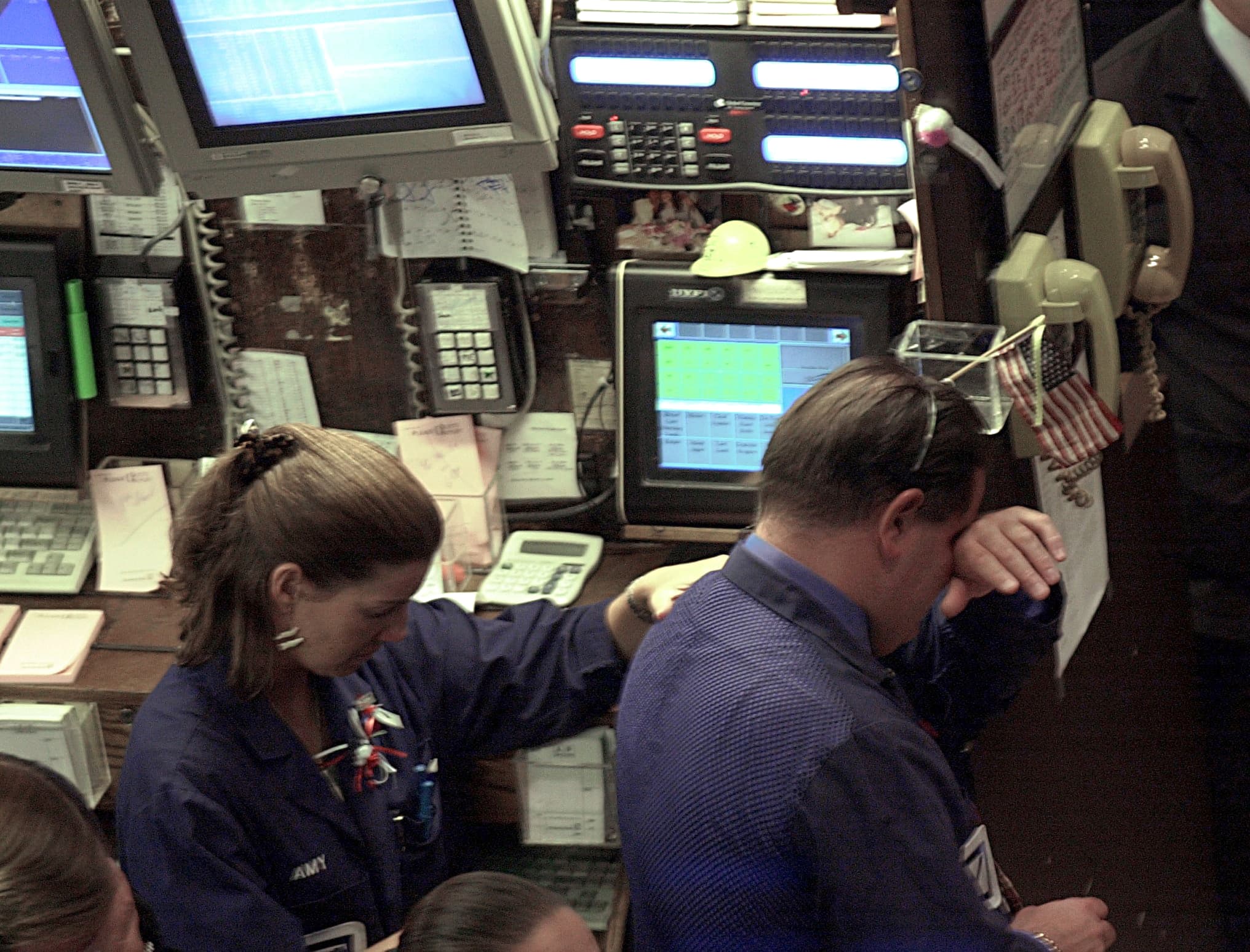As we reflect on the 20th anniversary of 9/11 and on the friends and family no longer with us, it’s important to remember that disaster was followed by one of the greatest days in the history of the New York Stock Exchange: the reopening of trading on Monday, Sept. 17, 2001.
That day, I was there early, standing outside the NYSE with Chairman Richard Grasso as Treasury Secretary Paul O’Neill drove up to help ring the opening bell with firefighters and policemen. They were led by NYC Police Commissioner Bernie Kerik and Fire Department Commissioner Thomas Von Essen, along with Senators Hillary Rodham Clinton and Charles Schumer, Mayor Rudy Giuliani, New York Governor George Pataki, and SEC Chairman Harvey Pitt.
“The market is ready, the country is ready,” said Grasso. “We’re back to business. Don’t bet against America because you’ll be wrong.”
On the floor, the mood was tense but patriotic, and why shouldn’t it be? Warren Buffett had gone on “60 Minutes,” saying he would not sell any of his holdings when the market reopened. There had been numerous calls in the week before from investors insisting it was the patriotic duty to buy.
Before the open, two minutes of silence were observed. Members of the New York City police and fire departments, representing the heroes of 9/11, had come on the floor. The entire room sang “God Bless America,” and then the police and firefighters, along with the dignitaries, rang the opening bell.
With that kind of opening, the trading that ensued was anticlimactic. An hour before the markets opened, the Federal Reserve had cut interest rates by a half point, but it didn’t seem to make a difference.
The S&P 500 dropped nearly 5% and the Dow fell 7% — to the lowest levels in nearly three years. By the end of the week, the S&P 500 had dropped nearly 12% from its pre-9/11 level.
No one cared. The market had been closed almost a week, the longest closure since the Great Depression.
What mattered was that it was open again.
The 9/11 Aftermath: The markets
The invasion of Afghanistan followed three weeks later, on Oct. 7, 2001. Briefly, it looked like the market was recovering. Within a month, the S&P was back to its level prior to 9/11. The government had announced billions of dollars in stimulus. The Federal Reserve had cut interest rates dramatically.
But all was not right. The Dotcom bust of 2000, followed by 9/11, had pushed the U.S. into a recession. The bankruptcy of Enron later that year further eroded confidence.
The summer of 2002 was a disaster. The S&P 500 dropped more than 20% in June and July. It didn’t bottom until October.
The 9/11 Aftermath: The psychological
For those of us who lived and worked downtown, the markets were not the major issue.
It was the psychological scars, which were just beginning to surface. Everyone who worked in the Financial District had friends who had died in the disaster. I had several, including Bill Meehan, the chief market analyst at Cantor Fitzgerald, a raconteur with a fondness for Hawaiian shirts and with whom I spent many wonderful after-hours in restaurants, talking about life and the markets.
There was also the grim reality of working downtown. The Financial District had morphed into a partly-closed armed camp. It was almost impossible to cross Canal Street, the dividing line between Soho/Chinatown and the Financial District, unless you were a resident or worked at the NYSE or on Wall Street. Police were everywhere, on every corner. No one knew if another attack was coming.
There was, above all, the smoldering pit of the World Trade Center. The smoke would not disappear for a year, and it could be seen for miles around. The worst was the smell: the acrid odor of still-burning paper, office furniture, and building materials.
And yet, everyone at the NYSE came to work. They were – like me – anxious, and many were depressed. But we all came to work.
But work was changing. 9/11 and the Dotcom bubble burst had combined to greatly reduce interest in Wall Street and trading. More trading was going electronic, eroding the floor’s dominance.
Some decided to leave the business, others adapted. I joined a Buddhist center and learned how to meditate. It got me through that dark year. I still practice.
Thinking of you, Bill
And what about my friend Bill Meehan from Cantor Fitzgerald, who died in the North Tower on Sept. 11, 2001, along with 657 other Cantor Fitzgerald employees?
He’s still there. He lives on in my memory and the memory of all others who knew and loved him.
If you’re by the Memorial, stop by to pay your respects. William J. Meehan, Jr., Panel N-27, North Memorial Pool.
